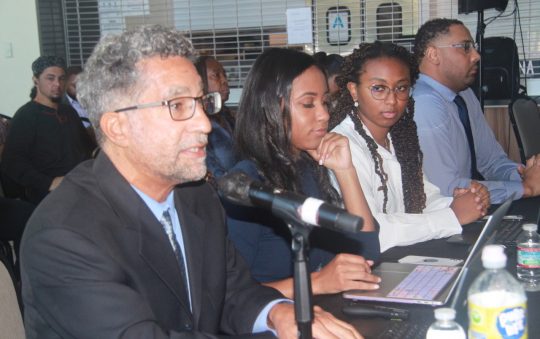
The California Reparations Task Force was established to assist with the study of the financial, economic, educational, and social harms caused by slave laws such as Jim Crow era standards that flowed into the state masked as public policy for the masses.
Reparations for African Americans are intended to address the racial wealth gap and compensate Black Californians on a lineage-based model for the impacts of slavery and institutional racism. While suggested reparations are specifically meant for Black communities in the state, they could have a positive impact on other communities of color as well.
For example, the final Task Force report could become a primer for other communities of color that believe, and can prove, historic and pervasive atrocities based on race and/or ethnicity. A final bill package drafted by the state legislature could become a guideline for future reparations for such claims.
On June 30, 2023, the Task Force will deliver its final report culminating in over 1,000 pages of empirical data, historical facts, and first of their kind recommendations. The case against forced losses and unwarranted punishments, based solely on race, that have contributed to modern-day inequalities in every segment of our society for Blacks, is unequivocal.
What is to become of the Task Force’s recommendations has yet to be determined by the state’s Legislature. What is clear, however, is that human and civil rights have been violated for generations of Blacks. What is also clear is this community does not stand alone.
Japanese Americans are the most notable community in American history to have garnered reparations for the U.S. government’s roundup of Japanese American citizens during World War II and placing them in internment camps around the country. In 1992, 82,219 Japanese Americans received $20,000 for having been incarcerated decades earlier.
The admittance of the United States government of wrongdoing, and the apology that was a part of its atonement process with the Japanese American community, was monumental and paramount in seeking amends for harms caused by lack of moral leadership.
This struggle to right a wrong became the genesis for a renewed look at the treatment of Blacks in our history. Reparations that had been promised as early as 1865 as Special Field Order No. 15, issued by Union General William Sherman, granted freed slaves forty acres and a mule – an order that was never followed.
One can only guess what would have become of slaves who became landowners. Would the wealth gap between white Americans and Black Americans be so far apart as it is now?
For those who read the final report and its recommendations, you will discover, as Task Force members did, that the issue of reparations is complex with various pathways and types of atonement possibilities. Communities of color should value the report’s insight and stand in solidarity with its findings – that harm was caused and an apology is the minimum that is owed.
This Task Force has set the stage for crucial acknowledgements and by doing so can be of assistance to other communities in their discovery process. Ultimately, we can all help address the legacy of racism that still affects people of color in California and in America and together eradicate the institutional and systematic harms caused by polices born of bigotry.







